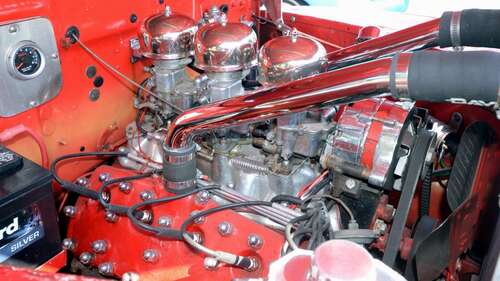
During the 1960s, there was a fierce and competitive market for fast and powerful cars. While significant innovation occurred, it sometimes seemed as though the next big thing was simply a bigger engine. This is the era in which Ford’s 427 first appeared, offering maximum output from a relatively simple V8 block. For racing, however, the big 427 needed something a little extra.
While Ford was heavily involved in racing in the early ’60s, its rival Chrysler released a new 426 Hemi engine that proved to be a formidable opponent on the track. As a response, Ford engineers took one of its proven 427 blocks and built new heads that would significantly raise the output using overhead cams, a rarity for American cars of the era. Using a timing chain instead of gears to keep costs low, Ford finished the massive beast of an engine for the 1965 NASCAR season, only to see it banned because the head of NASCAR thought it to be “too European.” Although it eventually ran in one race in a large Galaxie limited to a single carburetor, Ford lost enthusiasm and made it available to purchase through its dealers instead.
From there, the 427 Cammer went on to become a favorite of drag racers, fueling the rise of the Funny Car class. For about $2,300 ($19,574 in modern terms), racers received a sophisticated, robust, and powerful block capable of more than 500 horsepower which made Ford synonymous with drag racing ever since.
[Featured image by Mr.Choppers via Wikimedia Commons | Cropped and scaled | CC BY-SA 3.0]

